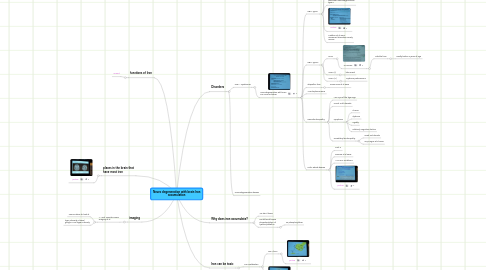
1. functions of Iron
1.1. missed
2. places in the brain that have most iron
2.1. picture
3. imaging
3.1. J. Med. Genetics 2009, Gregory et al.
3.1.1. Some indices to look at
3.1.2. hypo intensity in basal ganglia AND hyper intensity
4. Iron can be toxic
4.1. Iron-metabolism
4.1.1. Fe2+ form
4.1.1.1. picture
4.1.2. picture
5. Disorders
5.1. NBIA - syndromes
5.1.1. neurodegeneration with brain iron accumuluation
5.1.1.1. NBIA Type 1
5.1.1.1.1. PANK2 gene mutation
5.1.1.1.2. formerly: Hallervorden-Spatz disease
5.1.1.1.3. Panthotenate kinase associated neurodegeneration type 2
5.1.1.1.4. Picture
5.1.1.1.5. Madhavi et al 2004, movement disorders society movies
5.1.1.2. NBIA Type 2
5.1.1.2.1. INAD
5.1.1.2.2. ANDA (I)
5.1.1.2.3. ANDA (II)
5.1.1.3. Idiopathic form
5.1.1.3.1. Paisan-Ruiz et al 2009
5.1.1.4. Aceruloplasminemia
5.1.1.5. Neuroferritinopathy
5.1.1.5.1. MRI: eye of the tiger sign
5.1.1.5.2. Onset 3-5th decade
5.1.1.5.3. symptoms
5.1.1.5.4. Hereditary ferritinopathy
5.1.1.6. Kufor Rakeb disease
5.1.1.6.1. Park 9
5.1.1.6.2. Ramirez et al 2006
5.1.1.6.3. ATP13A2 mutations
5.1.1.6.4. picture
5.2. Neurodegenerative disease
6. Why does iron accumulate?
6.1. We don't know
6.2. Pantothenat kinase phosphorylation of cystein/pantethin
6.2.1. no phosphorylation
